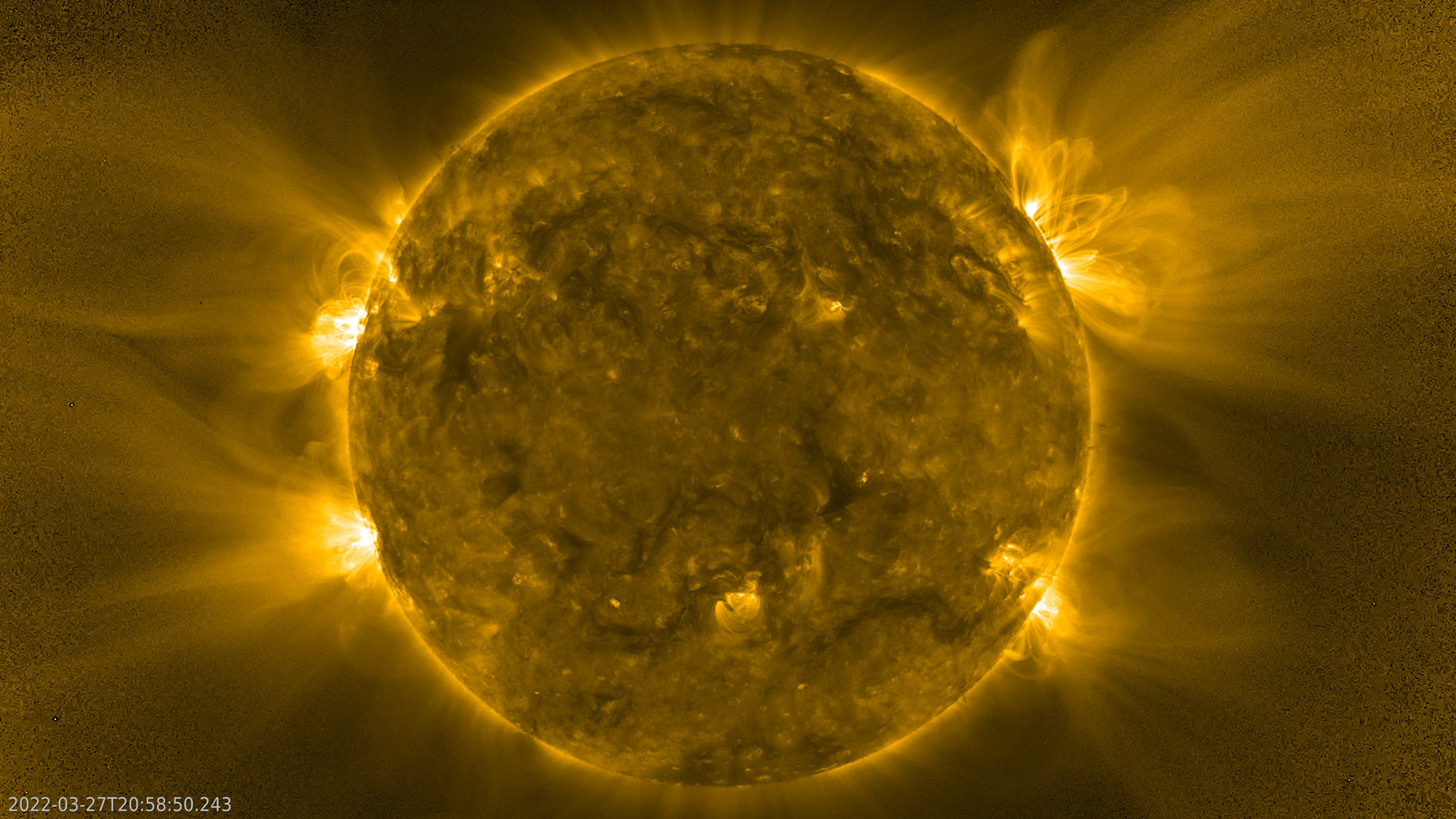See the sun's atmosphere like never before thanks to a simple Solar Orbiter camera hack (video)
The new Solar Orbiter imaging mode reveals the most exciting part of the sun's atmosphere.
The European Solar Orbiter spacecraft has peered into previously unexplored parts of the sun's atmosphere thanks to scientists who applied a simple hack to its main camera.
Solar Orbiter, launched in 2020, has delivered an impressive string of new discoveries during its three years studying the sun so far. The spacecraft, fitted with a suite of ten instruments, has proven to be especially capable of unraveling mysteries surrounding the sun's atmosphere. From the discovery of miniature flares, called campfires, in the spacecraft's first images to the recent finding of the likely mechanism driving the solar wind, Solar Orbiter has been consistently delivering ground-breaking science about the star at the center of our solar system. And more is to come.
Researchers behind one of Solar Orbiter's most powerful instruments, the Extreme Ultraviolet Imager (EUI) — a camera that studies the most energetic parts of ultraviolet light emitted by the sun — have now, for the first time, revealed a completely new way of using this powerful instrument.
Related: Solar Orbiter catches Mercury crossing the sun. Here's the amazing video.

This new mode of operation works similarly to an instrument called the coronagraph. The coronagraph is a device that shields the sun's disk to allow scientists to view the surrounding atmosphere that is up to a million times fainter than the blocked-out region. Though Solar Orbiter actually carries a coronagraph, called METIS, that instrument observes the solar atmosphere in visible light and in the lower-energy ultraviolet part of the electromagnetic spectrum.
But it is in the part of the light spectrum that is only visible to EUI that scientists can study the most intriguing phenomena that occur at the boundary between the sun's atmosphere and its surface.
"Physics is changing there, the magnetic structures are changing there, and we never really had a good look at it before," David Berghmans, EUI principal investigator and solar physicist at the Royal Observatory of Belgium, said in the statement. "There must be some secrets in there that we can now find."
Breaking space news, the latest updates on rocket launches, skywatching events and more!
EUI science team member Frédéric Auchère, an astrophysicist at the Institute of Astrophysics of the Université Paris-Sud in France, described the new imaging mode as a result of "a hack," a last-minute modification devised before the launch of Solar Orbiter in early 2020.
"I had the idea to just do it and see if it would work," Auchère said in a European Space Agency (ESA) statement. "It is actually a very simple modification to the instrument."
The scientists added a tiny protruding "thumb" to the instruments shutter. When the shutter opens only halfway, this thumb obscures the sun's disk, allowing EUI to see with great clarity the faint solar atmosphere.
In the video sequence obtained through the new imaging mode, scientists combined the Solar Orbiter's EUI view of the sun's atmosphere with an image of the star taken by NASA's STEREO mission, which orbits the sun at a slightly closer distance than Earth does. Solar Orbiter, for comparison, follows an elliptical orbit that periodically takes the spacecraft within the orbit of the solar system's innermost planet, Mercury.
By coincidence, STEREO happened to be looking at the sun from the same angle as Solar Orbiter was during the experiments with the new EUI imaging mode. That allowed scientists to combine the images and study the links between phenomena observed on the surface and in the atmosphere.
Observers on Earth can naturally see the outermost parts of the sun's atmosphere during total solar eclipses. The new EUI imaging mode, however, allows scientists to peer into regions of the atmosphere that are much closer to the sun's surface than what such rare events and conventional coronagraphs allow.
EUI images the sun in very high resolution, and although Earth-based telescopes with large mirrors can study the sun's surface in even greater resolution, they can't observe the fascinating high-energy, ultraviolet light that EUI sees. This is because that light gets absorbed by Earth's atmosphere before it reaches the telescopes' lenses. Solar Orbiter, on the other hand, travelling in the vacuum of space has a perfectly clear view of the star. The mission takes the closest ever images of the star and in a few years will take a look a the star's poles — the world's first. Scientists hope that studying the sun's polar regions up close will shed light on the mysterious forces driving the sun's magnetic field, which in turns drives the generation of sunspots, solar flares and eruptions.

Tereza is a London-based science and technology journalist, aspiring fiction writer and amateur gymnast. She worked as a reporter at the Engineering and Technology magazine, freelanced for a range of publications including Live Science, Space.com, Professional Engineering, Via Satellite and Space News and served as a maternity cover science editor at the European Space Agency.
